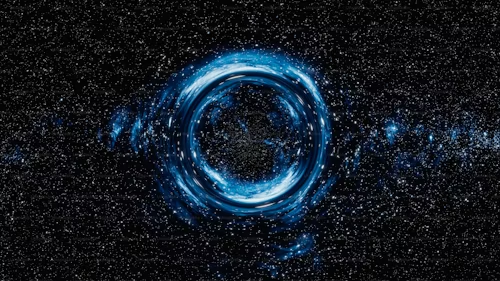Understanding Stars-923: An In-Depth Exploration of the Celestial Phenomenon

The universe has always been a vast expanse of mystery, captivating the minds of scientists and enthusiasts alike. Among the many celestial phenomena that have piqued the interest of astronomers, Stars-923 stands out as a particularly intriguing subject. In this comprehensive article, we aim to explore the depths of Stars-923, delving into its characteristics, significance, and the cutting-edge research that continues to unveil the secrets of this celestial wonder.
What is Stars-923?
Stars-923 is a designation given to a stellar object that exhibits unusual properties, distinguishing it from the millions of other stars scattered across the universe. Unlike typical stars, which follow well-documented evolutionary paths, Stars-923 has presented anomalies that challenge existing astronomical theories. This star is believed to reside in a remote region of the galaxy, far from the influence of larger star systems, making its study both complex and fascinating.
The Discovery of Stars-923
The discovery of Stars-923 can be traced back to the early 21st century, when a team of astronomers conducting a deep-sky survey noticed irregularities in the light patterns emitted by the star. These anomalies prompted further investigation, leading to the classification of the star as Stars-923. The initial findings were met with skepticism, as the star’s behavior did not align with any known stellar models. However, as more data was collected, it became evident that Stars-923 was not an ordinary star.
Physical Characteristics of Stars-923
One of the most striking features of Stars-923 is its unusual luminosity. Unlike other stars of similar size and age, Stars-923 exhibits fluctuations in brightness that have baffled astronomers. These fluctuations are believed to be caused by complex processes occurring within the star’s core, possibly involving interactions with dark matter or exotic particles. Additionally, the star’s spectral analysis has revealed the presence of elements that are rare in other stellar bodies, further adding to its mystique.
Size and Mass
Stars-923 is categorized as a supergiant star, with a mass several times greater than that of our Sun. Despite its massive size, the star’s density is relatively low, suggesting that it may be in the later stages of its life cycle. The star’s immense gravitational pull has also led to the formation of a surrounding accretion disk, composed of gas and dust that orbits the star at high speeds.
Temperature and Composition
The surface temperature of Stars-923 is estimated to be significantly higher than that of typical stars, reaching levels that make it one of the hottest stars in its class. The star’s composition is equally intriguing, with the presence of heavy elements such as iridium and platinum, which are usually found in much smaller quantities in other stars. These elements are believed to be the result of intense nuclear reactions taking place within the star’s core.
Theories Behind the Anomalies of Stars-923
Several theories have been proposed to explain the unusual characteristics of Stars-923. One leading hypothesis suggests that the star may be the remnant of a binary star system that merged, resulting in the complex interactions observed today. Another theory posits that Stars-923 is undergoing a rare phase of stellar evolution, where its core is collapsing while its outer layers expand, leading to the observed fluctuations in luminosity.
Dark Matter Interaction
One of the most compelling theories involves the interaction of Stars-923 with dark matter, an invisible and mysterious substance that is believed to make up a significant portion of the universe’s mass. Some astronomers theorize that Stars-923 may be located in a region of space where dark matter density is unusually high, causing it to affect the star’s behavior in ways that are not yet fully understood.
Exotic Particles
Another intriguing possibility is that Stars-923 is emitting or interacting with exotic particles that are not commonly found in other stars. These particles could be responsible for the star’s unique spectral signatures and its unpredictable luminosity patterns. Further research into this theory could potentially lead to groundbreaking discoveries in the field of particle physics.
The Significance of Stars-923 in Modern Astronomy
The study of Stars-923 holds great significance for modern astronomy, as it challenges existing models of stellar evolution and provides new insights into the behavior of stars under extreme conditions. By understanding the mechanisms behind Stars-923’s anomalies, scientists hope to gain a deeper understanding of the forces that govern the universe and the role that exotic phenomena play in shaping the cosmos.
Implications for Future Research
Stars-923 serves as a natural laboratory for testing theories related to dark matter, exotic particles, and the limits of stellar physics. Future research on this star could lead to advancements in our understanding of the universe’s fundamental properties, potentially unlocking new technologies and methodologies for studying other celestial phenomena.
Technological Innovations
The study of Stars-923 has also spurred the development of new observational technologies, including advanced telescopes and spectrometers capable of detecting minute variations in light and composition. These innovations are not only enhancing our ability to study Stars-923 but are also being applied to the exploration of other enigmatic stars and galaxies.
Conclusion
Stars-923 represents one of the most enigmatic and fascinating objects in the universe, offering a window into the complex and often unpredictable nature of stellar evolution. As astronomers continue to study this remarkable star, we can expect new discoveries that will reshape our understanding of the cosmos and the forces that drive it. The mysteries of Stars-923 are far from being fully unraveled, and each new piece of data brings us closer to understanding the true nature of this celestial phenomenon.
Recent Comments

Macaroni Cheese Recall: Health Alert Issued for Contaminated Products

iPhone 16 Pro Max Price in Canada: What to Expect

CNN Expands Global Reach with Strategic Innovations

Kamala Harris: Shaping the Future of U.S. Politics

Amelia Bond Net Worth 2024 (Latest)

Warwick Davis Net Worth: Exploring the Life and Fortune of a Legendary Actor



